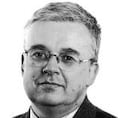A further step forward in the development of in-vitro fertilisation (IVF) was revealed by regulators in Britain this week, when it was announced that a technique called mitochondrial donation treatment has been used to enable the birth of up to five babies.
The technique, also known as mitochondrial replacement treatment (MRT), uses tissue from the eggs of healthy female donors to create IVF embryos that are free from harmful mutations their mothers carry and are likely to pass on to their children.
Because the embryos combine sperm and egg from the biological parents with tiny cellular structures called mitochondria from the donor’s egg, the resulting baby has DNA from the mother and father as usual, plus a small amount of genetic material from the donor.
While more than 99.8 per cent of the DNA in the babies comes from the mother and father, crucially, the material from the donor does not come from the nucleus of the donor cells. Rather the genetic material is found in the mitochondria, which are located in the periphery of our cells. It is therefore not correct to label these babies as having three parents.
Sally Rooney: ‘I enjoy writing about men ... the dangerous charisma of the oppressor class’
Alzheimer’s: ‘I’ve lost my friend and my companion,’ says Úna Crawford O’Brien of fellow Fair City actor Bryan Murray
Ryan Adams at Vicar Street: A gig that nobody will forget anytime soon, but perhaps not for all the right reasons
Meghan Markle’s new podcast: An ego-fluffing conversation underlining the culture gap between Ireland and the US
At present, there are no cures for those born with a mitochondrial DNA mutation and so many of these mitochondrial diseases are severe, progressive and often fatal
Mitochondria are the powerhouses or energy centres of our cells. People inherit all their mitochondria from their mother. Like nuclear DNA, mitochondrial DNA is subject to a risk of spontaneous mutation. Mutations may also be inherited. Some mutations are minor or harmless and do not affect cellular processes. Others cause significant cellular dysfunctions, known as ‘mitochondrial diseases’. The most significant effects are seen in the parts of the body that require the most energy: the heart, nervous system, muscles and lungs. Affected children may not be able to chew food. They will potentially have limited mobility and breathing challenges. They will generally be very fatigued. And many children suffer from blindness or at least some form of vision impairment.
At present, there are no cures for those born with a mitochondrial DNA mutation and so many of these mitochondrial diseases are severe, progressive and often fatal. About one in 6,000 babies are affected by mitochondrial disorders.
In 2015, the British parliament changed the law to permit MRT and the Newcastle Fertility Clinic was designated a national centre and licensed to perform the procedure by the UK’s Human Fertilisation and Embryology Authority.
The procedure has several steps. First, sperm from the father is used to fertilise eggs from the affected mother and a healthy female donor. The nuclear genetic material from the donor’s egg is then removed and replaced with that from the couple’s fertilised egg. The resulting egg has a full set of chromosomes from both parents, but carries the donor’s healthy mitochondria instead of the mother’s faulty ones. This is then implanted in the mother’s womb.
MRT is a modified form of IVF that uses mitochondria from a healthy donor egg. This donor DNA is only relevant for making effective mitochondria, does not affect other traits such as appearance and does not constitute a ‘third parent’.
As in all medical treatments there is a need to weigh up the risks versus the possible benefits. On the downside, recent research has found that in some cases, a tiny number of abnormal mitochondria that are inevitably carried over from the mother’s egg to the donor egg can multiply when the baby is in the womb. This reversal could lead to a disease in the child but the reason it is seen in the cells of some children born following MRT procedures, but not in others, is not fully understood.
According to the Guardian, which broke this week’s story, Britain is not the first country to create babies from MRT. In 2016, a US doctor announced the world’s first MRT birth after treating a Jordanian woman who carried mitochondrial mutations that cause a fatal condition called Leigh syndrome. At present, the procedure is banned in the US.
In addition to the UK, Australia became the second country to legislate for MRT in 2022. But, according to Dr Barry Lyons, associate professor of medical ethics and law at Trinity College Dublin, their respective legislation differs in one important aspect: in Australia there is no guarantee of donor anonymity, while in Britain a child born as a result of MRT does not have the right to know the identity of the donor of the mitochondrial DNA. However, both countries formed the view that MRT did not involve interfering with the nuclear DNA germ line.
Here in Ireland, the Health (Assisted Human Reproduction) Bill 2022 is currently making its way through the Oireachtas. According to the heads of the Bill it sets out to “regulate the provision of any treatment or procedure, including such treatment or procedure for the purposes of surrogacy within the State, that involves the handling of gametes or embryos, or both, for the purposes of establishing a pregnancy (to be known as ‘AHR treatment’)”.
It specifies the setting up of an “Assisted Human Reproduction Regulatory Authority” to license AHR treatment and to regulate and license research involving embryos and stem cells. The Bill does not specifically mention the introduction of MRT in Ireland.
While there are no plans to introduce MRT here, one thing is clear: the new procedure does not involve the cloning of babies or the introduction of multiple parenting.
Dr Muiris Houston is an Irish Times columnist and health analyst














